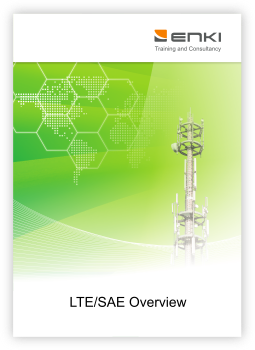ELP 4002 ★★★
The LTE/SAE Overview course presents the Long Term Evolution (LTE) and System Architecture Evolution (SAE) technology. A general characteristic of the technology is presented, with stress on its advantages and disadvantages. The course overviews the packet core, the radio network and the multimedia technology, which uses the former two to provide users with high bandwidth services.
Target audience – Who should attend and benefit
The course is addressed to managerial staff and network engineers involved in decision process of network development, as well as to anybody who wishes to understand the principles of the LTE technology.
Prerequisites – What you are supposed to know prior to the course
A good understanding of existing 2G and 3G mobile systems will be beneficial.
Course content – What you will learn
- OFDMA principles
- Two way communication (FDD and TDD)
- Access network evolution overview (FDMA, TDMA, WCDMA, OFDMA)
- Complex numbers
- Fourier analysis
- Orthogonal Frequency Division Multiplexing (OFDM) concept
- OFDM transmitter
- Modulation
- EPS architecture
- LTE requirements
- EPS architectural principles (EPC and E-UTRAN)
- EPC functions
- LTE functions
- Strata (NAS and AS)
- EPS bearers and QoS
- Integration with 2G and 3G
- Interfaces overview
- IMS overview
- What is the IMS?
- Why IMS?
- IMS standardisation
- IMS architecture
- Standardised applications
- IMS and LTE integration
- Example of IMS service
- LTE signalling
- User plane
- Control plane
- Protocols (RRC, PDCP, RLC, MAC)
- Radio interface structure
- LTE air interface introduction
- Channel structure (logical channels, transport channels and physical channels)
- Time domain structure for FDD and TDD
- Frequency domain structure
- Scheduling Block
- System spectral efficiency
- Downlink transmission technique
- Uplink transmission technique
- Multiple Input Multiple Output (MIMO)
Duration – How long it takes
2 days which is equivalent to 12 hours of lecture.

